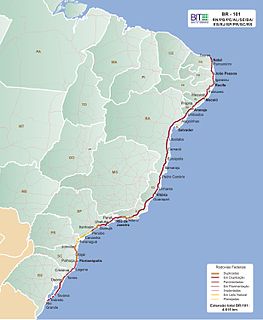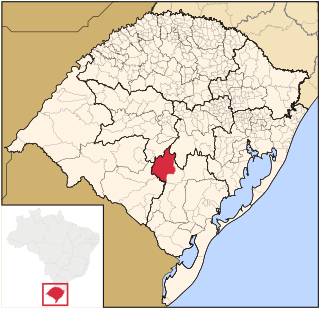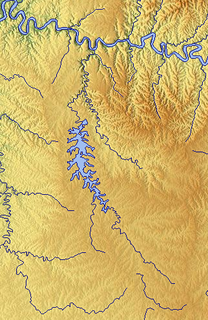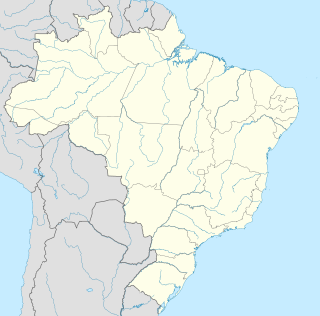Related Research Articles

Rio Grande do Sul is a state in the southern region of Brazil. It is the fifth-most-populous state and the ninth largest by area. Located in the southernmost part of the country, Rio Grande do Sul is bordered clockwise by Santa Catarina to the north and northeast, the Atlantic Ocean to the east, the Uruguayan departments of Rocha, Treinta y Tres, Cerro Largo, Rivera and Artigas to the south and southwest, and the Argentine provinces of Corrientes and Misiones to the west and northwest. The capital and largest city is Porto Alegre. The state has the highest life expectancy in Brazil, and the crime rate is relatively low compared to Brazilian national average. Despite the high standard of living, unemployment is still high in the state, as of 2017.
Talian is a dialect of the Venetian language, spoken primarily in the Serra Gaúcha region in the northeast of the state of Rio Grande do Sul in Brazil. It is also spoken in other parts of Rio Grande do Sul, as well as in parts of Espirito Santo and of Santa Catarina.

For the diesel multiple unit that operated in the United Kingdom, see British Rail Class 101.

Astyanax is a genus of freshwater fish in the family Characidae of the order Characiformes. Some of these fish, like many of their relatives, are kept as aquarium pets and known collectively as tetras. With around 150 described species and new ones being described yearly, this genus is among the largest of the entire order; Hyphessobrycon also has more than 145 species and which one is larger at any one time depends on whether more species have been recently described in one or the other. The blind and colorless cave tetra of Mexico is a famous member of the genus, but its taxonomic position is disputed: Some recognize it as part of the Mexican tetra and this is supported by phylogenetic evidence, but others recognize the cave form as a separate species, A. jordani.

Crenicichla is a genus of cichlids native to South America commonly known as the pike cichlids. They are found in most tropical and subtropical freshwater habitats between the Andes and the Atlantic.

The Paraíba do Sul, or simply termed Paraíba, is a river in southeast Brazil. It flows 1,137 km (706 mi) west to northeast from its farthest source at the source of the river Paraitinga to the sea near Campos dos Goytacazes. The river receives its name when it meets the river Paraibuna at the Paraibuna dam.

Lagoa dos Patos is the largest lagoon in Brazil and the largest barrier-lagoon in South America. It is located in the state of Rio Grande do Sul, southern Brazil. It covers an area of 10,100 km2 (3,900 sq mi), is 180 miles (280 km) long and has a maximum width of 44 miles (60 km).

Mycteria is a genus of large tropical storks with representatives in the Americas, east Africa and southern and southeastern Asia. Two species have "ibis" in their scientific or old common names, but they are not related to these birds and simply look more similar to an ibis than do other storks.
Polish Brazilians refers to Brazilians of full or partial Polish ancestry who are aware of such ancestry and remain connected, to some degree, to Polish culture, or Polish-born people permanently residing in Brazil. Also, a Polish Brazilian may have one Polish parent.

Rio Grande is a municipality (município) and one of the oldest cities in the Brazilian state of Rio Grande do Sul. It was the state capital from 1835 to 1845. It is the most important port city in the state and has one of the most important maritime ports in Brazil.

Caçapava do Sul is a Brazilian municipality in the state of Rio Grande do Sul, located on the banks of the Camaquã River. As of 2016, the city has an estimated population of 34,664. It was the 2nd capital of the Piratini Republic from 1839 to 1840.

Charqueadas is a municipality in the state of Rio Grande do Sul, Brazil. It is located on the right side of the Jacuí River in the southern-central part of the state, in the region Carbonífera, about 60 km (37 mi) from Porto Alegre and belonging to the metropolitan area of the state capital. The area of the municipality is 214.80 km2 (82.93 sq mi) and a population of 33,808, making it the largest municipality in area and population in the region. It borders to the south Arroio dos Ratos, to the north Triunfo, to the east Eldorado do Sul and to the west São Jerônimo.

Presidente Lucena is a municipality in the state of Rio Grande do Sul, Brazil.

The Passo Fundo River is a river of Rio Grande do Sul state in southern Brazil. It is a tributary of the Uruguay River.
Olivancillaria carcellesi is a species of sea snail, a marine gastropod mollusk in the family Olividae, the olives.

Rio dos Sinos is a river in the state of Rio Grande do Sul, southern Brazil. It rises in the hills east of Caraá at elevations above 600 metres (2,000 ft) and covers a distance of about 190 kilometres (120 mi), flowing into the delta Jacuí in Canoas, at an elevation of only 5 metres (16 ft).

Capão Bonito do Sul is a municipality in the state of Rio Grande do Sul in the Southern Region of Brazil.

Santa Margarida do Sul is a municipality in the state of Rio Grande do Sul in the Southern Region of Brazil.

Santa Cecília do Sul is a municipality in the state of Rio Grande do Sul in the Southern Region of Brazil.
References
- ↑ "Mapa Rodoviário Rio Grande do Sul" (PDF). Brazilian Ministry of Transport. 2002.
- ↑ de Lucena, Carlos Alberto S.; Zaluski, Amanda Bungi; de Lucena, Zilda Margarete Seixas (2017-09-18). "Astyanax taurorum a new species from dos Touros River, Pelotas River drainage, an upland southern Brazilian river (Characiformes: Characidae)". Zoologia. 34: 1–8. doi: 10.3897/zoologia.34.e20174 . ISSN 1984-4689.
| This article related to a river in Rio Grande do Sul is a stub. You can help Wikipedia by expanding it. |